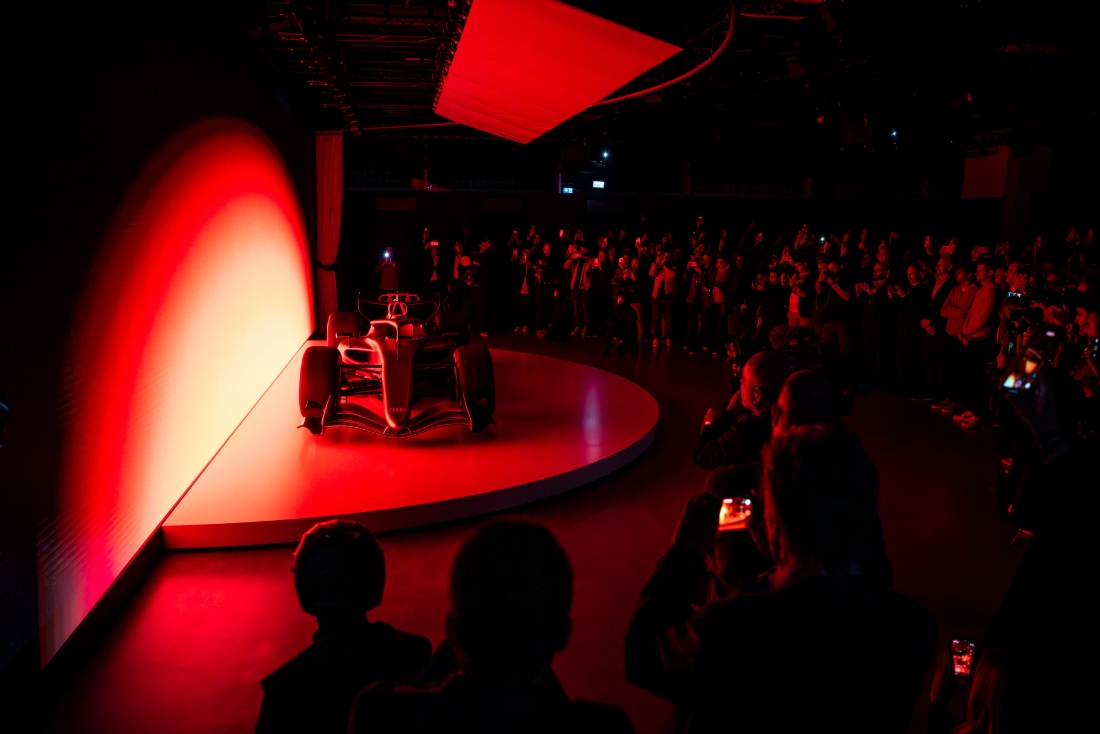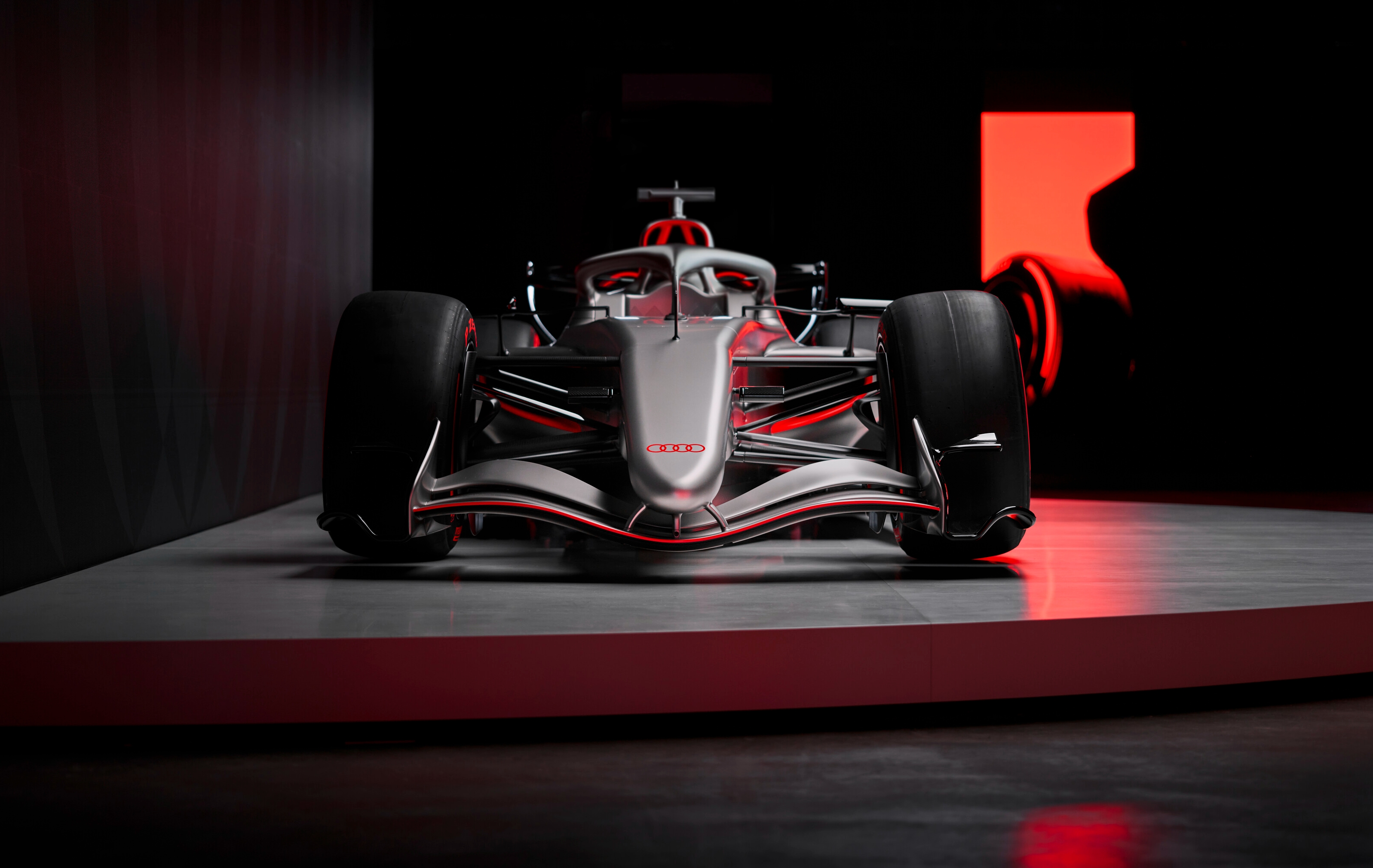There has been so much excitement and anticipation surrounding the addition of an 11th team in Formula 1 – in the form of Cadillac – that it would be understandable for Audi to feel a little overlooked.
It was over three years ago that Audi announced it would be entering F1, and later in 2022 when it confirmed that Sauber would be its partner in the new venture. A whole new power unit department was set up at its facility in Neuburg an der Donau in southern Germany, while eventually a complete takeover of Sauber was finalized.
Given the evolution of what has been a very impressive F1 constructor for over 30 years, Audi perhaps hasn’t captured the imagination in the same way that the expansion team at Cadillac has, but then it hasn’t particularly tried to, either.
Audi has announced investments – from Qatar – and partnerships – in the form of sponsors Revolut and Adidas – but it was back in May that Cadillac was making a lot of noise in Miami to unveil its logo and identity.
In the middle of November in Munich, it was finally Audi’s turn.
The timing was no accident, as Audi has not felt the need to make a huge song and dance until it is actively on the grid. But with just the final three races of 2025 to go before attention turns to the new era, it was the time for the German manufacturer to ensure it was in the news for the season-ending run of races. And there were two key themes that really stood out during a quick visit to the Audi Brand Experience Center on Wednesday.
One was the brand’s hi story. It might have been unveiling an identity for 2026 – with a concept livery on its R26 model that was used to display the key colors that will combine to create the Audi image in F1 – but it was very much pointing out that elite-level motorsport has been part of the company for a long time.
The Auto Union Type C was the first car to emerge ahead of key personnel arrivals, with the likes of Audi CEO Gernot Dollner, head of Audi’s F1 project Mattia Binotto and team principal Jonathan Wheatley all being dropped off in iconic Audi machinery.
Drivers Nico Hulkenberg and Gabriel Bortoleto – who also arrived as passengers in iconic Audi Quattro rally cars – provide the present day, but they were joined by legendary former drivers including Tom Kristensen, Hans-Joachim Stuck, Michele Mouton and Allan McNish.
F1 names they might not all be, but they are revered in their respective categories as pioneers or the benchmark. And that’s something Audi could claim with the machinery that delivered them, winning championships in rally’s Group B era, or securing the first diesel-powered victory at Le Mans with the R10 TDI. There was also the first electric-drivetrain winner of the Dakar in 2024 – the Audi RS Q e-tron – to add to the list of technological trailblazers that have brought Audi success in motorsport.
“I’m a car guy,” Wheatley says. “The moment that I was approached about the potential for joining the Audi Formula 1 project, I don’t know, there was something inside me, and I felt like I was drawn to it – it didn’t feel like I was leaving somewhere to come here.
“I spent my years watching these cars. You’re talking about the Quattros in the forest with flames coming out of the exhaust, and if you want somebody to get excited about something as a kid, it’s that.
“The technology that Audi has used to achieve their success in motorsport has been extraordinary. And engaging is something else that makes the project exciting. What are we going to do differently? What are we going to do that’s unique? How are we going to achieve our targets doing it our own way?
“I’m very, very much looking forward to that journey, and I’m very, very excited. It feels like it’s actually happening now. It’s taken a while, but pretty soon we’re going to be the Audi Formula 1 team.”
Talk of the journey was far and wide, but with the history of the brand established – and providing the foundations with which Audi is inspiring belief in its latest motorsport venture – there was also a real focus on what lies ahead.
A big countdown clock highlighted how it was 115 days 09 hours 15 minutes and 29 seconds (at the time) until lights out in Australia to start the 2026 season, and the most public start of Audi’s F1 story. But a bigger, more imposing target was set four years later, for the team to be fighting for world championships from 2030.
It’s a target that Binotto described as “ambitious, because we are ambitious,” but Dollner also says it has its roots in the past successes of other new Audi motorsport projects.
“Maybe we are the team having the least orientation where we are, because there’s so much new stuff coming together in this project,” Dollner admits. “A new team and a team in a ramp up phase. So next year especially will be extremely challenging. But as we said we have a long-term plan. It will be our task to learn fast and to adapt and to see how things proceed.
“We did some benchmarking. We had some experience from other race series. We found that a four-year period is quite ambitious but realistic. So that’s where it came from.
“We have a three-phase model. We start as challengers, then we want to become competitors, and then in the third phase from 2030 on race for the victory.”
It was a date that was repeated on numerous occasions throughout the night, with Audi keen to show it understands the challenges ahead but pointing to the array of four-wheel winners that kicked-off the night as proof it can tackle those challenges effectively.

